Nippur – Holy City Of God Enlil And One Of The Oldest Cities Of Sumer
A. Sutherland - AncientPages.com - Nippur (Sumerian: Nibru, "Enlil City"; Akkadian: Nibbur) was among the most ancient Sumerian cities and one of the most important religious centers throughout Mesopotamia. Some researchers date back the city's creation to about 5000 BC.
In the 4th millennium BC the temple of the Sumerian wind god Enlil at Nippur in present Iraq was a famous pilgrimage center. The rectangular palace atop the ancient ziggurat dates from the Parthian period and is thus thousands of years younger. Omage credit: David Stanley - CC BY 2.0
Throughout the history of Sumer, Nippur - located northeast of the town of Ad-Diwaniyah, now in southeastern Iraq - had a special place among the cities.
Based on the earliest existing records, it is known that Nippur was not a capital but a sacred city, a central and unique shrine of the region. Its holy character helped Nippur survive several wars and the fall of dynasties that destroyed other cities.
Nippur was the seat of Enlil, the chief god of the Sumerian pantheon, the "Lord Wind," ruler of the cosmos, and one of the triads of gods, including Anu (Sumerian: An) and Ea (Sumerian: Enki). The city - located halfway between Ur and Sippar - also played a significant political role.
Based on the earliest existing records, it is known that Nippur was not a capital but a sacred city, a central and unique shrine of the region. Its holy character helped Nippur survive several wars and the fall of dynasties that destroyed other cities.
Nippur, Temple of Bel excavation, 1896. Hilprecht, H. V. (Hermann Vollrat), 1859-1925 - Old Babylonian inscriptions. Published 1896 - Public Domain
Kings were involved in the city's restoration of temples, construction of fortification walls, public administrative buildings, and canals. Even after 1800 BC., when the Babylonians made Marduk the most critical god in southern Mesopotamia, Enlil was still worshiped and had his sanctuary. Nippur remained a holy and prestigious city, with over a hundred temples, regardless of which dynasty ruled Mesopotamia.
Probably because of its strategic location and sacred meaning, it remained a neutral city.
Cuneiform tablet from Nippur, in the name of Shar-Kali-Sharri, 2300–2100 BC. Image credit: Mary Harrsch - CC BY 2.0
Nippur's most significant growth occurred under the Ur III kings (c. 2100 BC). It was almost matched in the time of the Kassites (c. 1250 BC.) and when the Assyrians from northern Iraq dominated Babylonia (c. 750-612 BC).
The first mention of Nippur is related to the construction of a temple dedicated to Enlil. It was erected during the reign of King Enmebaragesi, a king of Kish, according to the Sumerian king list. The list states that he subdued Elam and reigned for 900 years.
Enmebaragesi dominated Sumer around the year 2700 BC and also controlled Nippur. Little is known about the prehistoric city of Nippur, but by 2500 BC, the city expanded, was fortified, and probably reached the extent of the present remains.
In about 2450 BC, the city became part of the empire of Eannatuma of Lagash. About 2430 BC, Nippur was conquered by Enshakushanna, a king of Uruk in the later 3rd millennium BC, who, according to the Sumerian King List, reigned for 60 years.
Babylonian cuneiform tablet with a map from Nippur, Kassite period, 1550–1450 BC. Image credit: Mary Harrsch - flickr.com - CC BY 2.0
About .2300 BC, Sargon's Akkadian empire controlled the city, and around the year 2230 BC, Sargon's grandson - Naram-Sin - under the influence of the temple's oracle, attacked Enlil in Nippur. As a result, there was a meeting of the eight most essential gods, who withdrew their support for the king; the city's inhabitants began to suffer from hunger.
With the collapse of the Sumerian civilization and Ur about 2000 BC, Nippur was briefly occupied by the Elamites and later incorporated into the Amorite kingdom of Isin.
The remains of the Nippur, which today are named Nuffar, were excavated in 1851 and during different periods, namely in 1888 - 1900 and 1948 – 1990.
In the city's eastern part, the so-called 'scribal quarter,' archaeologists unearthed several thousands of Sumerian tablets, with economic, linguistic, and many examples of the Sumerian literary texts. Most of them were found in the archives in two private homes.
Another part of the city was the 'sacred area' with the temple complex and a ziggurat called E-kur (in its present form), where construction works were performed by the first kings of the Third Dynasty of Ur - Ur-Nammu and Shulgi (2094–2047).
In one of the trenches, archaeologists discovered two prominent temples; one was the temple of Inanna, goddess of love and war, one of the most important deities in the Mesopotamian pantheon, and another, the Temple of the North – the remains of the palace, the temple library, which provided 20 thousand tablets and tombs, where the dead were buried after partial burning.
The excavation conducted in 1990 revealed an Akkadian tomb and a large temple to Bau (Gula), the Mesopotamian goddess of healing and medicine, whose special symbol was a dog.
Among various artifacts were several figurines of dogs found on floors and buried in the plaster on walls; fragmentary figures of human beings having pain; one with his hand to his throat, another with one hand to his head, and one to his stomach.
Written by A. Sutherland - AncientPages.com Staff Writer
Updated on January 16, 2024
Copyright © AncientPages.com All rights reserved. This material may not be published, broadcast, rewritten or redistributed in whole or part without the express written permission of AncientPages.com
Expand for referencesKramer Samuel Noah. N. The Sumerians
Kriwaczek, Paul. Babylon: Mesopotamia and the Birth of Civilization
More From Ancient Pages
-
 On This Day In History: Emperor Romulus Augustus Deposed – On September 4, 476
News | Sep 4, 2016
On This Day In History: Emperor Romulus Augustus Deposed – On September 4, 476
News | Sep 4, 2016 -
 Why Did Socrates Drink Poison And Commit Suicide?
Ancient History Facts | Apr 21, 2018
Why Did Socrates Drink Poison And Commit Suicide?
Ancient History Facts | Apr 21, 2018 -
 Oldest Writing System Among Slavs To Be Germanic Runes – New Study
News | Feb 15, 2021
Oldest Writing System Among Slavs To Be Germanic Runes – New Study
News | Feb 15, 2021 -
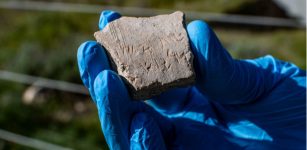 Rare Discovery Of A 2,500-Year-Old Ancient Receipt With The Name Of King Darius The Great
Archaeology | Mar 2, 2023
Rare Discovery Of A 2,500-Year-Old Ancient Receipt With The Name Of King Darius The Great
Archaeology | Mar 2, 2023 -
 Sole Survivor Recalls An Incredible Unexplained Mountain Mystery
Featured Stories | Aug 7, 2023
Sole Survivor Recalls An Incredible Unexplained Mountain Mystery
Featured Stories | Aug 7, 2023 -
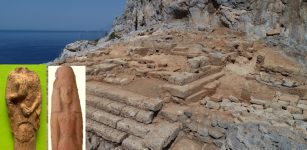 Secrets Of The Ancient Temple Of Dimitra At The Acropolis Of Falasarna Revealed By Archaeologists
Archaeology | Nov 19, 2022
Secrets Of The Ancient Temple Of Dimitra At The Acropolis Of Falasarna Revealed By Archaeologists
Archaeology | Nov 19, 2022 -
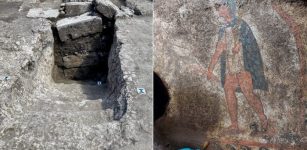 Extraordinary Painted Tomb Belonging To A Mercenary Warrior Found At Pontecagnano Necropolis
Archaeology | Oct 28, 2023
Extraordinary Painted Tomb Belonging To A Mercenary Warrior Found At Pontecagnano Necropolis
Archaeology | Oct 28, 2023 -
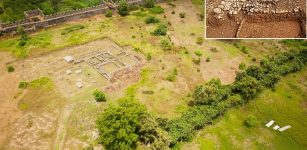 1,800-Year-Old Roman Winepress Found Near Roman Fort At Gonio (Apsaros), Georgia
Archaeology | Nov 23, 2022
1,800-Year-Old Roman Winepress Found Near Roman Fort At Gonio (Apsaros), Georgia
Archaeology | Nov 23, 2022 -
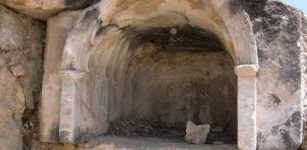 Plutonium: Dangerous Pluto’s Gate Was An Ancient Gateway To Hell At Hierapolis That Was Real
Featured Stories | Feb 18, 2017
Plutonium: Dangerous Pluto’s Gate Was An Ancient Gateway To Hell At Hierapolis That Was Real
Featured Stories | Feb 18, 2017 -
 Mystery Of The Lost Cahuenga Pass Treasure: Baffling Unexpected Deaths Caused By A Curse Or Natural Causes?
Featured Stories | Nov 2, 2018
Mystery Of The Lost Cahuenga Pass Treasure: Baffling Unexpected Deaths Caused By A Curse Or Natural Causes?
Featured Stories | Nov 2, 2018 -
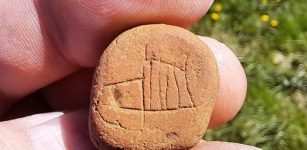 Small Stone Carved With A Viking Ship May Be Oldest Picture Ever Found In Iceland
Archaeology | Jun 16, 2023
Small Stone Carved With A Viking Ship May Be Oldest Picture Ever Found In Iceland
Archaeology | Jun 16, 2023 -
 Creator God Kururumany Who Introduced Death Into The World And Deprived Humans Of Immortality
Featured Stories | Dec 19, 2016
Creator God Kururumany Who Introduced Death Into The World And Deprived Humans Of Immortality
Featured Stories | Dec 19, 2016 -
 Solar Eclipses And New Attempt To Date Homer’s Iliad And Odyssey
Myths & Legends | Jan 7, 2016
Solar Eclipses And New Attempt To Date Homer’s Iliad And Odyssey
Myths & Legends | Jan 7, 2016 -
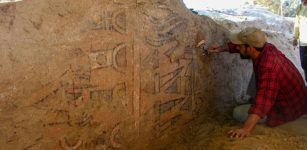 Exceptional Discovery Of Ancient Fresco Depicting Mythological Scenes In Peru
Archaeology | Dec 1, 2022
Exceptional Discovery Of Ancient Fresco Depicting Mythological Scenes In Peru
Archaeology | Dec 1, 2022 -
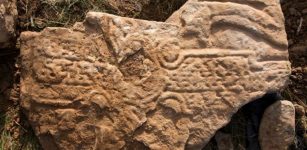 Enigmatic Stones Of The Picts: Orkney’s Unique Stone With Dragon-Like Creature And Cross Carving
Civilizations | Oct 19, 2018
Enigmatic Stones Of The Picts: Orkney’s Unique Stone With Dragon-Like Creature And Cross Carving
Civilizations | Oct 19, 2018 -
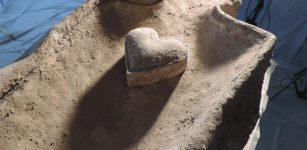 Remarkable discovery: Ancient coffins reveal centuries-old secrets of French nobility
News | Sep 1, 2015
Remarkable discovery: Ancient coffins reveal centuries-old secrets of French nobility
News | Sep 1, 2015 -
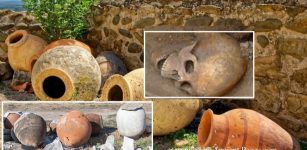 Researchers Develop New Ways Of Visualizing Ancient Small Objects By Combining Technologies
Archaeology | Apr 20, 2022
Researchers Develop New Ways Of Visualizing Ancient Small Objects By Combining Technologies
Archaeology | Apr 20, 2022 -
 Peculiar Unsolved Greek Mystery In New York
Featured Stories | Mar 26, 2024
Peculiar Unsolved Greek Mystery In New York
Featured Stories | Mar 26, 2024 -
 Surprisingly Complex History Of Crocodiles – New Study
Evolution | Nov 23, 2023
Surprisingly Complex History Of Crocodiles – New Study
Evolution | Nov 23, 2023 -
 Mystery Of The Patagonian Giants: Europe’s Lost Race From The ‘Land Of The Bigfeet’
Featured Stories | Jun 20, 2020
Mystery Of The Patagonian Giants: Europe’s Lost Race From The ‘Land Of The Bigfeet’
Featured Stories | Jun 20, 2020




